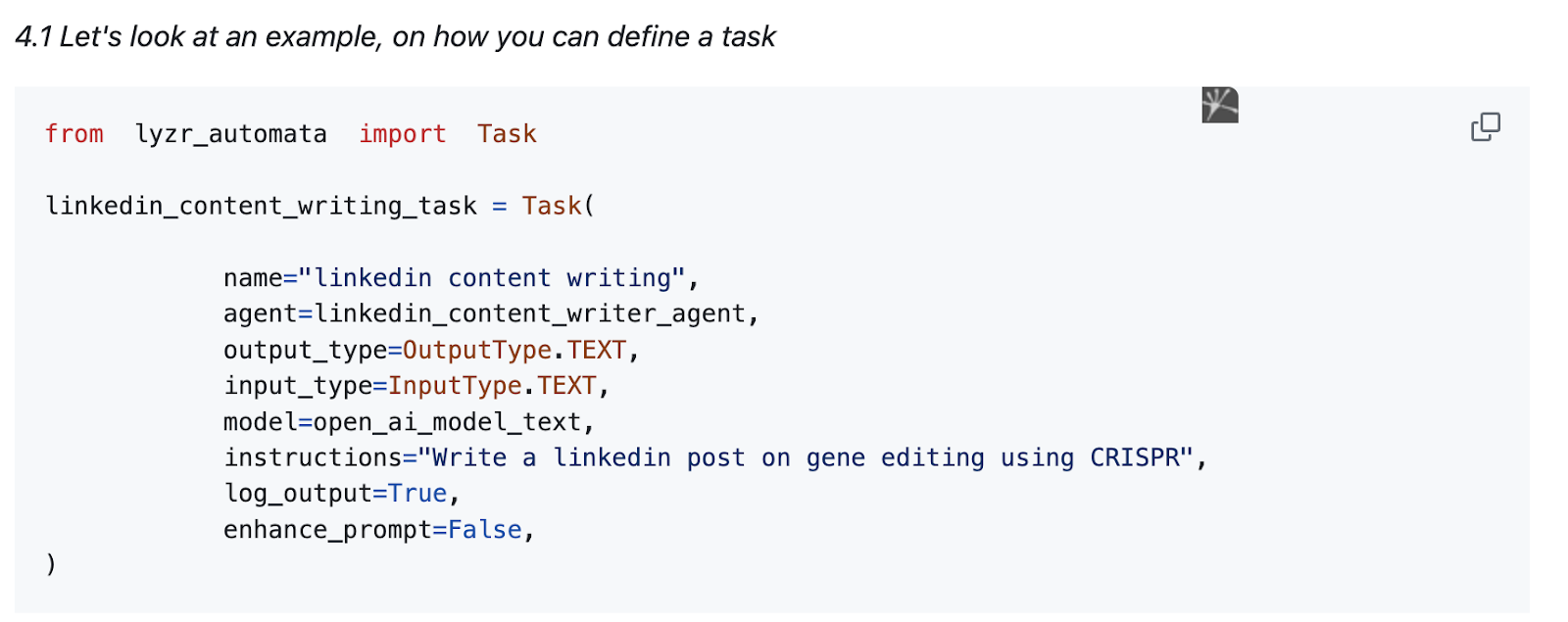LyzrCore presents Lyzr Automatawhich represents a significant advancement in the field of process automation, offering a low-code multi-agent framework designed to optimize complex workflows. At its core, the system incorporates a sophisticated Human-in-Loop mechanism, which allows users to guide agent behavior through predefined rules. This innovative approach uses a rule-based agent to check the conformance of actions and outcomes to user-specified parameters. The adaptive learning capability of the framework is enhanced by storing the results of these conformance checks in a database, which is subsequently queried by a Retrieval Augmented Generation (RAG) agent in future runs. This iterative process significantly reduces rule violations and minimizes errors by learning from previous interactions.
It is important to note that Lyzr Automata was initially developed as an experimental project, which may have led to some preliminary imperfections. However, the development team is deeply committed to refining the stability and structure of the framework in upcoming releases, with the ultimate goal of delivering a robust, high-quality automation solution. In the spirit of collaborative innovation, the creators actively encourage contributions from the broader community, fostering an environment of shared progress and collective advancement of the project’s capabilities.
Lyzr Automata is an innovative multi-agent autonomous framework designed for advanced process automation. This sophisticated system is designed with the primary goal of simplifying complex workflows and maximizing efficiency and effectiveness. The framework’s architecture makes it easy to create and deploy multiple specialized agents, each tightly coupled to specific tasks.
A key feature of Lyzr Automata is its ability to allow these agents and tasks to operate independently, executing the instructions provided to achieve a stable operating state.
To maintain clarity and ease of use, the framework is structured around five building blocks:
1. Models
2. Agents
3. Tools
4. Tasks
5. Pipes
This modular approach allows for a more intuitive understanding and implementation of the framework, allowing users to seamlessly integrate and customize each component to their specific automation requirements. By breaking down the framework into these essential elements, Lyzr Automata provides a flexible and scalable solution for a wide range of automation challenges across diverse industries and applications.
Models AIModels form the core unit of the Lyzr Automata framework, making it easy to integrate various LLM and ai models into automation workflows. The framework offers pre-built model classes for popular services such as OpenAI and Perplexity, improving accessibility. Additionally, users can extend the base AIModel class to incorporate support for custom models, providing flexibility in implementation and extending the framework’s capabilities to suit diverse automation needs.
Agents In the Lyzr Automata framework, agents function as specialized entities, each equipped with a defined role, personality, and memory capacity. These agents are designed to provide direction and expertise to LLMs, thereby improving their effectiveness in performing specific tasks within the automation workflow. By utilizing these directed specialists, the framework ensures more accurate and context-appropriate responses from the underlying ai models.
Within the framework of Lyzr Automata, Tools Automation tools are critical components that enable agents to perform assigned tasks effectively. These tools function as interfaces, facilitating connections between agents and external software components, such as APIs or other functional modules. This integration capability significantly expands the reach and versatility of automation processes.
The framework offers a range of pre-built tools for out-of-the-box use, as well as support for tools from third-party vendors such as Llama Hub, which enhances its extensibility. For more specialized requirements, users can use the Tool base class to create custom tools. This customization process involves defining the tool’s function, along with its input and output parameters using Pydantic models, ensuring type safety and data validation.
Tasks In the Lyzr Automata framework, tasks represent the smallest operational units and define specific actions to be performed by agents. These atomic elements effectively combine agents and tools, encapsulating the precise goals to be achieved within the automation workflow. By integrating agent capabilities with the appropriate tools, tasks provide a clear and concise definition of the desired outcomes in the automation process.

Pipelines In the Lyzr Automata framework, task execution is organized in a structured and sequential manner. The current implementation supports linear asynchronous pipelines, allowing for efficient processing of tasks in a predetermined order. Looking ahead, the development team plans to introduce directed acyclic graph (DAG) asynchronous pipelines in future releases, which will allow for more complex and flexible workflow configurations.
Code
Flow
This study presents Lyzr AutomataLyzr Automata is an innovative low-code multi-agent framework for process automation. It features a Human-in-Loop mechanism and adaptive learning via a rule-based agent and RAG system. The framework consists of five key components: models, agents, tools, tasks, and pipelines. Models integrate various LLMs, while agents act as specialized entities with defined roles. Tools connect agents to external software, and tasks combine agents and tools to define specific actions. Pipelines organize task execution in a sequential manner. Although initially experimental, Lyzr Automata aims to streamline complex workflows and encourages community contributions for further development and refinement.
Asjad is a consultant intern at Marktechpost. He is pursuing Bachelors in Mechanical Engineering from Indian Institute of technology, Kharagpur. Asjad is a Machine Learning and Deep Learning enthusiast who is always researching the applications of Machine Learning in the healthcare domain.





